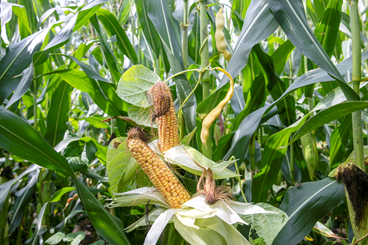
https://ec.europa.eu/eip/agriculture/en/find-connect/projects/bovine-beef-innovation-network-europe
Introduction
Mixed cropping is the simultaneous cultivation of two or more crops on the same land. This system was applied in agriculture thousands of years ago, but due to fertilizers and pesticides, it lost its importance. In this way, using mixed crops is an interesting way to increase biodiversity in arable fields and crop rotations.
Description of the innovation
Nowadays the sector is focused and optimized on sole crops. Crops are grown in pure stands and firms are not adapted to harvest and process mixed yields. However, mixing different crops (legumes and non-legumes) may save synthetic N fertilizer, improve yield stability, increase soil fertility, and suppress weeds, due to higher biodiversity and different functional plant groups, and make better use of available resources such as nutrients, water, and light.
Perennial forages can be divided into three groups: grasses, N fixing legumes, and other herbaceous species. Species belonging to different groups should be more complimentary, however, growing two different types of grass together will also influence yield positively. The reason to use legumes in the mixture is the N-fixing characteristics these plants have, which influence growth. In addition, nutritional quality/feed value is better. For example, adding red clover to the grass will improve protein and crude fibre content while adding alfalfa will improve neutral detergent fibre concentration and digestibility.
Forage for cattle, both silage, and grazing can be timothy, meadow fescue, tall fescue, perennial ryegrass, combined with festulolium, red clover, and white clover. To increase crude protein content, protein yield, and relative feed value of cereals (barley, triticale, wheat, oat, or maize), peas can be added to the field.
Other non-leguminous species (forages herbs) that can be used are ribwort plantain, chicory, and salad brunet. They improve nutritional quality, and increased plant diversity, competitiveness, and tolerance to different weather conditions. Also, these forage herbs are rich in minerals that can in partly replace extra mineral supplements.
Different ongoing projects/examples with mixed crops
In the Netherlands, different farmers are busy with different combinations of mixed cropping. Some examples:
- Maize with sunflower: Sunflowers are drought tolerant and also provide a tasty feed for cows. However, ensiling the plants is difficult. The farmer wants to investigate how the cultivation works and what the fodder value of the harvested product is. He combines the mixed crop with a protein-rich catch crop that provides an extra cut of roughage after the main crop is harvested.
- Maize contains a lot of energy, but little protein. Beans can be a good supplement. Moreover, as leguminous plants, beans bind nitrogen from the air and fix it in the soil. Therefore, less artificial fertilizer is needed.
In spring, this farmer sowed the beans and corn at the same time with the same machine, per ha 80,000 corn plants and 40,000 beans. They used 2 different kinds of beans, namely French beans and large yellow snap beans (picture).
 Maize in combination with French beans and large yellow snap beans
Maize in combination with French beans and large yellow snap beans
- Sorghum may be an alternative to silage maize, but contains relatively little protein. Sunflowers may be a good addition. The seeds contain protein and healthy energy in the form of unsaturated fatty acids.
Farmers’ Benefits is a project in Belgium where maize is grown in combination with climbing beans. It only started this year (2022), but the setup is based on a preliminary test with good results. Within this project, the project partners (ILVO, Hogeschool Gent, and Hooibeekhoeve) will look for the best combination of maize/beans and how best to fertilise (leguminous plants fix N, so less N input or similar yield).
Challenges
Challenges of mixed cropping are for example weed management and competition. Competition for resources changes during the season; at the beginning of the growing season, plants will compete mainly for water and nutrients, while later on, they will compete for light. In addition, the properties of the species will also determine the dominance, for example, deep-rooted species will restrict the growth of shallow-rooted species, as they have more access to deep soil moisture and nutrients.
More nutrients are removed from the soil, compared to sole crops. This should be taken into account, especially for fields with limited availability of nutrients.
Also timing of the crops is challenging; when the crops should be planted and when to harvest is a challenge. Different crops may have different growing cycles, making it important to get the timing right.
Opportunities
When applied well, mixed cropping can improve the sustainability, productivity, and yield of the crops.
Under the mixed crops, fewer weeds and other unwanted species are present as fewer resources are available for the weeds. Leading to a lower amount of weeds in the dry matter yield (10-60% in sole stands compared to <5% in mixed crops).
As more diverse plants are present, and less fertiliser and pesticides are used, biodiversity will be positively influenced. More insects will come to the field, which also attracts bigger animals.
Things to keep in mind
Crops should be adapted to each other. It is possible that one crop can take nutrients or light from the other. Not all crops work together. Also planting pattern and population needs to be considered.
Impact on farm performance
Socio-economic resilience: Cost for extra crop and less fertiliser needed
Animal health and welfare: Nutritional value of the feed may change positively
Production efficiency and meat quality: Combining maize for example with clover will increase protein content of the ration and positively influence animal production
Environmental sustainability: Positive for biodiversity, both aboveground and in the soil, due to lower fertiliser and pesticide input
Sources
https://www.agroproeftuindepeel.nl/actualiteit/mengteelt-bonen-met-mais-hoopvol
https://pureportal.ilvo.be/en/projects/teeltdiversificatie-bij-ruwvoederproductie-in-de-veehouderij-focu
https://link.springer.com/article/10.1007/BF00011315
https://click.endnote.com/viewer?doi=10.3390%2Fagriculture11030255&token=WzI0Njc4MzksIjEwLjMzOTAvYWdyaWN1bHR1cmUxMTAzMDI1NSJd.AWQrPCr4YnPJbg3O8kYvJE_LNbI